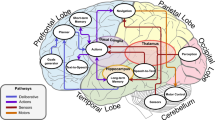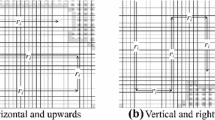Abstract
This paper presents a technique for a reactive mobile robot to adaptively behave in unforeseen and dynamic circumstances. A robot in nonstationary environments needs to infer how to adaptively behave to the changing environment. Behavior-based approach manages the interactions between the robot and its environment for generating behaviors, but in spite of its strengths of fast response, it has not been applied much to more complex problems for high-level behaviors. For that reason many researchers employ a behavior-based deliberative architecture. This paper proposes a 2-layer control architecture for generating adaptive behaviors to perceive and avoid moving obstacles as well as stationary obstacles. The first layer is to generate reflexive and autonomous behaviors with behavior network, and the second layer is to infer dynamic situations of the mobile robot with Bayesian network. These two levels facilitate a tight integration between high-level inference and low-level behaviors. Experimental results with various simulations and a real robot have shown that the robot reaches the goal points while avoiding stationary or moving obstacles with the proposed architecture.
Similar content being viewed by others
Explore related subjects
Discover the latest articles and news from researchers in related subjects, suggested using machine learning.References
Mataric MJ (1994) Interaction and intelligent behavior. PhD thesis, MIT
Tyrrell T (1994) An evaluation of Maes’s bottom-up mechanism for behavior selection. Adapt Behav 2(4):307–348
Kim K-J, Cho S-B (2006) A unified architecture for agent behaviors with selection of evolved neural network modules. Appl Intell 25(3):253–268
Hu H, Brady M, Probert P (1993) A decision theoretic approach to real-time obstacle avoidance for a mobile robot. Intell Robots Syst 1457–1464
Gomi T, Volpe P (1993) Collision avoidance using behavioral-based AI techniques. In: Proceedings of intelligent vehicles ’93 symposium, pp 141–145
Arkin RC (1998) Behavior-based robotics. MIT Press, Cambridge
Smart WD (2002) Making reinforcement learning work on real robots. PhD thesis, Brown Univ
Hashimoto S, Kojima F, Kubota N (2003) Perceptual system for a mobile robot under a dynamic environment. In: Proceedings 2003 IEEE international symposium on computational intelligence in robotics and automation, pp 747–752
Inamura T, Inaba M, Inoue H (2000) User adaptation of human-robot interaction model based on Bayesian network and introspection of interaction experience. In: Proceedings of the 2000 IEEE/RSJ international conference on intelligent robots and systems, pp 2139–2144
Nicolescu MN, Mataric MJ (2002) A hierarchical architecture for behavior-based robots. In: Proceedings of autonomous agents and multi-agent systems, pp 227–233
Beetz M, Arbuckle T, Belker T, Cremers AB, Schulz D, Bennewitz M, Burgard W, Hahnel D, Fox D, Grosskreutz H (2001) Integrated, plan-based control of autonomous robot in human environments. IEEE Intell Syst 16(5):56–65
Bennett AA (2000) A behavior-based approach to adaptive feature detection and following with autonomous underwater vehicles. IEEE Ocean Eng 25(2):213–226
Sukhatme GS, Mataric MJ (2000) Embedding robots into the internet. Commun ACM 43(5):67–73
Nicolescu MN, Mataric MJ (2000) Extending behavior-based systems capabilities using an abstract behavior representation. In: Proceedings of AAAI fall symposium on parallel cognition, pp 27–34
Khoo A, Zubek R (2002) Applying inexpensive AI techniques to computer games. IEEE Intell Syst 17(4):48–53
Weigel T, Gutmann J-S, Dietl M, Kleiner A, Nebel B, Freiburg CS (2002) Coordinating robots for successful soccer playing. IEEE Trans Robot Autom 19(5):685–699
Matsuura M, Wada M (2000) Formative behavior network for a biped robot: A control system in consideration of motor development. Robot Hum Interact Commun 101–106
Mucientes M, Iglesias R, Regueiro CV, Bugarin A, Carinena P, Barro S (2001) Fuzzy temporal rules for mobile robot guidance in dynamic environments. IEEE Trans Syst Man Cybern 31(3):391–398
Fujimori A, Tani S (2002) A navigation of mobile robots with collision avoidance for moving obstacles. In: Proceedings of international conference on industrial technology, pp. 1–6
Mbede JB, Ele P, Mveh-Abia C-M, Toure Y, Graefe V, Ma S (2005) Intelligent mobile manipulator navigation using adaptive neuro-fuzzy system. Inf Sci 171(4):447–474
Sabourin C, Madani K (2008) Obstacle avoidance strategy for biped robot based on fuzzy Q-learning. In: Proceedings of international conference on climbing and walking robots and the support technologies for mobile machines, pp 695–702
Lane T, Kaelbling LP (2001) Toward hierarchical decomposition for planning in uncertain environments. In: Proceedings of the 2001 IJCAI workshop on planning under uncertainty and incomplete information, pp 1–7
Sabourin C, Bruneau O (2005) Robustness of the dynamic walk of a biped robot subjected to disturbing external forces by using CMAC neural networks. Robot Auton Syst 51(2–3):81–99
Carreras M, Yuh J, Batlle J, Ridao P (2007) Application of SONQL for real-time learning of robot behaviors. Robot Auton Syst 55(8):628–642
Sabourin C, Madani K, Bruneau O (2007) Autonomous biped gait pattern based on fuzzy-CMAC neural networks. Integr Comput-Aided Eng 14(2):173–186
Basye K, Dean T, Kirman J, Lejter M (1992) A decision-theoretic approach to planning, perception, and control. IEEE Expert 7(4):58–65
Akiba T, Tanaka H (1994) A Bayesian approach for user modeling in dialogue systems. Technical Report of Tokyo Institute of Technology
Neapolitan RE (2003) Learning Bayesian network. Prentice Hall series in artificial intelligence
Pearl J (1988) Probabilistic reasoning in intelligent systems: networks of plausible inference. Morgan Kauffman, San Mateo
Haider S, Levis AH (2008) Modeling time-varying uncertain situations using dynamic influence net. Int J Approx Reas 42(2):488–502
Author information
Authors and Affiliations
Corresponding author
Rights and permissions
About this article
Cite this article
Min, HJ., Cho, SB. Adaptive behaviors of reactive mobile robot with Bayesian inference in nonstationary environments. Appl Intell 33, 264–277 (2010). https://doi.org/10.1007/s10489-009-0164-0
Received:
Accepted:
Published:
Issue Date:
DOI: https://doi.org/10.1007/s10489-009-0164-0




